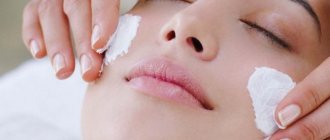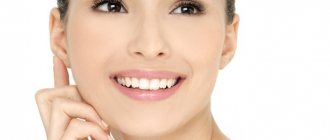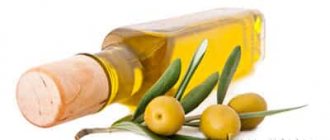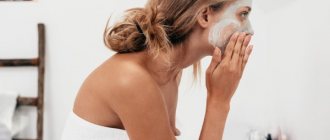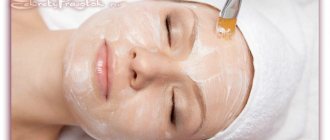History of the development of the method
The history of dermabrasion can be traced back to Ancient Egypt, where techniques for grinding the skin with abrasive materials, such as the well-known pumice, were used.
Over time, technology developed, and more and more advanced instruments were used during the procedure. A dramatic breakthrough in this field occurred in 1905, when the German dentist Ernst Kromeyer first described the technique of performing mechanical dermabrasion using a dental drill and various types of attachments. In those years, there were no devices with high rotation speeds, so it was not possible to polish large areas of leather in this way. In addition, many difficulties arose during the work, so this method did not find its followers for many years. In Europe, the era of mechanical dermabrasion began in 1949, when the German doctor Schreuss proposed the use of high-speed dermabrasion burs. The idea was implemented by engineer Schumann, who created a small-sized Diros motor that provides the required speed. This is how the first SchumanSchreus grinding machine was born. And until the 1980s, dermabrasion using this device was the main method for removing scars, age spots, and tattoos.
Sometimes this method was used as a rejuvenation procedure, but difficulties arose due to its pain, risk of infection and long recovery period. These reasons became the basis for the search and development of safer methods of exposure. As a result, new devices for performing dermabrasion services appeared, other, more advanced anesthesia techniques began to be used, as well as modern wound coverings based on hydrogels.
Consider your skin type
The main criterion when choosing such devices, as when choosing cosmetics, is skin type. Let us remind you what types are distinguished.
- Normal skin
is clean, without large pores, spots and rashes. Regular cleaning and nourishing cream are enough. - Sensitive skin
, on the contrary, becomes tight, flaky and prone to redness. Requires very careful care: it should not be rubbed or heavily massaged. - Dry skin
is thin, dehydrated, and wrinkles appear on it earlier than other types. The sebaceous glands do not produce enough oil, and the skin can quickly become inflamed or chapped in the cold, so it is important to moisturize it daily. - Oily skin
produces excess oil. Because of it, the face acquires a sallow color, enlarged pores, blackheads and pimples - it needs to be cleansed more often than others and use products that dry out the skin. - Combination skin
is typically oily on the forehead, nose and chin and dry on the cheeks, so it should be treated as two different skin types.
Manufacturers of home care devices write in the product descriptions what type of skin they are intended for. If you use a brush for oily skin on dry skin, you can not only dry it out, but injure it and cause serious irritation. However, usually one device is suitable for several skin types. Each has a separate attachment or mode. Silicone brushes and ultrasound are safe for all skin types.
Consult a dermatologist, cosmetologist or therapist. Perhaps some device is not suitable for medical reasons or does not match your skin type.
Facial cleansing brush Gezatone AMG108S
Device for ultrasonic facial cleansing Gess YOU GESS-689
Device for vacuum facial massage and microdermabrasion Gess 630 Elastic
The essence of the method
So, dermabrasion (from Latin derma + abrasio
) translated means “scraping the skin.” This is a cosmetic procedure aimed at removing the upper layers of the epidermis, and sometimes the upper part of the papillary dermis, resulting in epithelialization (the formation of epithelium* at the site of skin damage).
Thus, thanks to the dermabrasion procedure, tissue regeneration processes are stimulated, as a result of which young and healthy cells take the place of old and damaged cells. In such young cells, metabolism occurs more intensively, as a result of which the lack of collagen fibers in the skin is compensated, it becomes softer and more elastic.
Results of diamond microdermabrasion
After resurfacing, you can see obvious changes in the skin texture. This is especially noticeable in the photo before and after diamond microdermabrasion:
The skin is noticeably transformed, becoming smoother and more toned. Therefore, this technique is considered one of the best in anti-aging care, both in the opinion of cosmetologists and their clients.
Types of hardware dermabrasion:
- mechanical;
- microcrystalline dermabrasion (sandblasting), also called microdermabrasion; hydrodermabrasion (gas-liquid dermabrasion);
- laser dermabrasion.
In general, we can say that almost all of the listed types of hardware dermabrasion have a single principle of action, which consists in mechanically erasing the surface layer of the skin using various abrasives.
The exception is laser dermabrasion, which represents a completely different principle of action on the skin (under the influence of the laser, the surface and middle layers of the skin are not erased, but evaporated). We will not consider it in this material.
There are four main layers of the epidermis (see Figure 1), characterized by varying degrees of cell differentiation: main (basal)
, which lies on the basement membrane.
Above it is spinous
, then
granular
and
horny
.
Rice. 1
The main (basal) layer has an uneven border with the dermis. The main function of the basal layer is to produce cells for all layers of the epidermis. The spinous layer is located above the basal layer. The basal and spinous layers make up the so-called germinal layer, the function of which is the reproduction and movement of cells higher to the surface. Following the spinous layer is the granular layer, which contains cells in which the process of keratinization begins and continues, provided by the production of keratohyamine.
Dermabrasion can be:
— superficial, in which the process of removing the epidermis to a depth of no more than 30–50 microns occurs (without affecting the germinal layer of the dermis);
- medium (or moderately deep), depth of impact - from 50 to 120 microns (see Figure 2);
Rice. 2
- deep. In this case, as a result of the procedure, the epidermis, part of the germinal zone and the upper layers of the dermis protruding into the epidermis are removed. The depth of impact for deep dermabrasion is from 120 to 150 microns (see Figure 3).
Rice. 3
Safety
With microdermabrasion, only dead skin particles are removed - there is no direct effect on the epidermis and, therefore, the development of adverse reactions is minimized.
We are talking only about procedures that are prescribed by a cosmetologist after assessing existing contraindications. In addition, microdermabrasion should be performed only on professional equipment using certified products.
Indications and contraindications
General indications for the hardware dermabrasion procedure:
- age-related skin changes;
- cicatricial changes in the skin of any etiology (post-burn, post-traumatic, acne scars, etc.);
- benign epithelial formations: keratomas (seborrheic, actinic);
- nevi (extensive vascular and pigmented);
The use of any type of dermabrasion should be treated with caution!
The tendency to form keloid or hypertrophic scars is an absolute contraindication!
Relative contraindications to the dermabrasion procedure:
- diseases of the cardiovascular system (stage III hypertension, frequent attacks of angina and other cardiovascular diseases in the acute period);
- blood diseases;
- feverish conditions;
- the presence of purulent, viral processes;
- the presence of malignant neoplasms in the area of surgery;
- pregnancy and lactation.
The most common post-procedure complication is hyperpigmentation. Therefore, you should use hardware dermabrasion methods with caution in patients with dark skin and do not perform medium and deep dermabrasion in the summer.
Recommendations
Cosmetologists recommend micro-exfoliation of the skin in the following cases::
- loss of elasticity and keratinization of the skin;
- enlarged pores;
- to increase elasticity;
- for acne and acne;
- to eliminate age-related pigmentation and the consequences of acne;
- to combat fine wrinkles in the nasolabial triangle and eyes;
- to normalize sebum production for dry or oily skin.
Before prescribing the procedure, the specialist must exclude all contraindications.:
- diabetes;
- active phase of dermatitis;
- inflammatory infections, including herpes;
- rosacea (there are more suitable cosmetic procedures to eliminate it);
- wounds, burns and other skin damage at the healing stage;
- intolerance to aluminum oxide.
Diamond microgrinding does not involve the use of chemicals, so there is no likelihood of allergic reactions.
This manipulation is allowed during pregnancy.
Find out what bixiplasty of hair is here, and Elos hair removal - here. A dermatologist-cosmetologist will talk about indications and contraindications in the video:
Mechanical dermabrasion
There are several types of mechanical dermabrasion:
Mechanical removal of the epidermis and the upper part of the papillary dermis using abrasive milling materials.
Another commonly used name for it is “skin resurfacing.” As a result of regeneration processes, healthy, smooth skin is formed.
Mechanical dermabrasion is performed by a dermatosurgeon in an operating room. To carry out the procedure (in fact, the complexity of this procedure allows it to be called an operation!), special devices are used, equipped with a set of attachments, each of which has its own purpose. The set of attachments includes a nylon brush, diamond and metal cutters. A nylon brush is used at the beginning of the operation to remove the epidermis. Next, the next layer of papillary dermis is removed with a diamond cutter. The appearance of tiny drops of blood indicates that the abrasion has reached its maximum depth. A metal cutter is used to smooth out the skin with scars.
All patients must undergo preoperative preparation, which includes photographing the treated area, clinical and laboratory examination: general blood test, blood sugar test, coagulogram, general urinalysis, serological tests for HIV, hepatitis, syphilis, electrocardiogram. An examination by specialists is also necessary: a therapist, an anesthesiologist, a psychiatrist. The psychological preparation of the patient is of great importance. He must have an idea of the upcoming operation and understand the need to strictly follow all the doctor’s recommendations. Medicines usually prescribed include vitamins, sedatives, and analgesics. Sanding the skin in the perioral area (the part of the face around the mouth) is a provoking factor for the development of the herpes simplex virus, therefore all patients who are to undergo surgery in this area should receive a preventive course of antiherpetic therapy (acyclovir, Valtrex, etc. for 5– 7 days).
In addition, clients should be warned that after a mechanical dermabrasion procedure, slight redness of the skin is observed - postoperative erythema, which gradually fades over the course of 2-3 months.
The area of the operation on the body is determined in square meters. cm, and certain areas on the face are distinguished: the forehead, upper eyelids, lower eyelids, nose, each cheek, upper lip and chin. Depending on the scope of the operation, local anesthesia or, in a clinical setting, general anesthesia is performed.
Depending on the depth and location of the defect, the doctor must choose the right nozzle, cutter rotation speed (30–60 thousand rpm) and pressure on the skin. To eliminate shallow wrinkles, surface grinding is usually used using nylon brushes; if surgery is performed on deep wrinkles, scars, vascular and pigmented nevi, a deeper impact is required using diamond and metal cutters.
During the mechanical dermabrasion procedure, an assistant (this can be either a nurse or a second beauty salon doctor) holds the treated area of skin in a stretched state. The dermatosurgeon places the nozzle of the device parallel to the surface of the skin, applying it with light pressure, and moves it with smooth movements against rotation. To prevent thermal burns, it is necessary to constantly cool the skin with wipes soaked in saline solution. To achieve good results, a uniform grinding depth is required over the entire surface of the surgical field.
In areas where the skin is predisposed to the formation of keloid scars (perioral and periorbital areas, skin of the neck and décolleté), only superficial resurfacing is performed.
If the procedure (surgery) was performed on a large area (more than half the surface of the face), the patient must stay in the hospital. After a small amount of dermabrasion, post-operative procedures can be performed at home.
There are two methods of postoperative treatment: open and closed.
The open method involves repeated treatment of the wound surface with a 5% solution of potassium permanganate, resulting in the formation of a crust covering the surface of the wound (scab).
The closed method of treatment is carried out under different wound coverings: film, aerosol, gel, ointment, etc.
The advantage of the open method is the creation of a reliable barrier against infection of the wound surface. However, this disrupts the patient’s general well-being, and pain and burning occur in the area of the surgical field. The closed method has more advantages, since the epithelization period is reduced to 6–7 days, the patient’s general well-being does not suffer, and there is no discomfort in the area of the surgical field.
After the operation, each client (patient) should be given a leaflet with recommendations for further care, which should reflect a reminder (warning) that:
- in the first 2–3 months of the postoperative period, it is necessary to protect the skin from direct exposure to ultraviolet rays;
- visiting the solarium and bathhouse is prohibited;
- it is necessary to avoid certain cosmetic procedures (facial cleansing, chemical peeling, etc.);
- To prevent hyperpigmentation, it is necessary to use photoprotective creams with a sun filter of at least 50 for 2–3 months.
For more effective correction of skin changes, the dermabrasion procedure can be repeated within 10 to 14 days after complete epithelization (i.e., after complete restoration of the skin). This operation is called “early repeated dermabrasion.” The technique of repeated dermabrasion differs from the basic operation in that only superficial cutaneous anesthesia (with EMLA cream or 10% lidocaine spray) is sufficient and during the repeated operation only a metal cutter is used. In this case, the immersion depth should be within the same limits as during the basic operation.
Early repeated dermabrasion is a less painful operation, since the nerve endings in the dermis are not completely restored at the time of its implementation. The healing time and recommendations in the postoperative period are similar to the basic procedure, but the final result is certainly more pronounced.
Diamond dermabrasion.
Mechanical dermabrasion can be carried out with devices that include diamond-coated attachments of varying abrasiveness. The procedure is performed using rotating brushes coated with tiny diamond crystals.
Advantage:
- the procedure is painless;
- safe and hypoallergenic;
- does not produce dust that could get on the skin or lungs of the client and cosmetologist;
- virtual absence of a rehabilitation period (you can apply makeup and do your usual activities immediately after the session).
The number of diamond grinding procedures within one course can vary quite significantly depending on the problem being solved. Thus, small scars or wrinkles, as well as small age spots, can be removed in 8–10 sessions, but to eliminate superficial wrinkles, one session is often enough.
Hydromechanical peeling (or diamond attachments + vacuum).
This method is based on the operation of a flow-vacuum system equipped with diamond abrasive nozzles (see Figure 5). The degree of abrasiveness and the size of the nozzles are selected depending on the condition of the skin and the affected area. Simultaneously with grinding, vacuum lymphatic drainage is performed. A special cap is placed on each nozzle, which is filled with a medicinal solution. Removal of dead epithelial cells is accompanied by saturation of the dermis with active serum, which ensures deep hydration and nutrition of the skin. The composition of the serum is selected depending on the main cosmetic problem. For example, to treat acne, a solution is used that contains salicylic acid and components that have anti-inflammatory and antibacterial effects. But for the purpose of rejuvenation, the skin is saturated with hyaluronic acid, grape extract, and vitamins.
Rice. 5. Operating principle of hydromechanical peeling
Advantages:
- the ability to carry out the procedure on inflamed skin;
- the possibility of using special serums that can solve various problems;
- the device’s vacuum system performs several tasks simultaneously: skin cleansing, exfoliation, moisturizing;
- produces uniform polishing of the skin surface;
- there is no need for postoperative recovery.
For best results, on average, 3-4 procedures are required.
Diamond dermabrasion and hydromechanical peeling are used for photoaging, hyperkeratosis, uneven relief, superficial pigmentation, active acne, small and medium wrinkles, scars, stretch marks.
The disadvantages of these methods include the need for repeated grinding procedures to achieve a positive result.
Patient reviews
I have had skin problems for a long time - post-acne, and the scars are very visible. I decided to fight this. I was in the mood for chemical peeling, but the cosmetologist recommended microdermabrasion. The procedure is pleasant and painless. I immediately felt that my skin became more elastic, cleaner and even younger. And most importantly - no traces of inflammation, like after regular cleansing - after 15 minutes, clean, healthy skin!
Natalia, Nizhny Novgorod
I have already done two microdermabrasion procedures. The skin after it is very smooth, I would say perfect. No redness or swelling - an excellent option for those who do not have the opportunity to recover for a long period while sitting at home. I will do the procedure more than once.
Marina, Novokuznetsk
When I turned 30, I started thinking about how to slow down the appearance of the first wrinkles. I didn't even think about plastic surgery. And then the cosmetologist recommended hardware cosmetology. We settled on microdermabrasion as the most gentle method. The procedure is painless, the skin condition has noticeably improved after it. Because of my rhythm of life, it is important for me that immediately after the procedure I can return to normal life - my face did not turn red, there was no irritation. I recommend!
Katerina, Samara
Originally posted 2018-03-29 05:18:42.
Microcrystalline (sandblasting) dermabrasion
Microdermabrasion, or skin polishing (micro-resurfacing), was developed in the 80s of the 20th century by the Italian doctor Othello Ginebri.
When performing microcrystalline dermabrasion on an area of 1 square meter of skin. cm, place the nozzle of the device, in which there is a chamber with two holes: from one, a stream of air containing microcrystals (for example, aluminum oxide/corundum) is supplied under pressure, and a vacuum is created in the other. As a result, microcrystals hit the surface of the skin at high speed and mechanically remove epidermal cells, while the mixture of crystals and removed cells is sucked into a special container by vacuum. In this case, the impact of micro-resurfacing is concentrated only on the surface layers of the skin. During the procedure, complete or partial removal of the epidermis and its subsequent regeneration occur.
The depth of impact depends on the rate of release of microcrystals, which is determined by the speed of movement of the tip, the number of passes over the same area, and the patient’s skin type.
Depending on the goals pursued by microdermabrasion, the number of sessions and the depth of exposure necessary to obtain a lasting positive effect are determined. To achieve the desired result, you cannot limit yourself to one microresurfacing session, so a series of procedures (from 2 to 12) is usually carried out once a week. The more pronounced the skin defect, the more microdermabrasion sessions are required.
Immediately after the procedure and between individual sessions, creams with antibiotics are applied to the patient’s skin, and special moisturizing, softening and professional products used in the salon may be recommended to improve the regeneration process. This makes it possible to enhance the effect and solve aesthetic problems that cannot be completely resolved using the microdermabrasion method itself.
After the procedure, the client is recommended to have complete protection from sunlight (a reminder must be given!).
For modern microcrystalline dermabrasion devices, there are four types of sand (crystals):
- aluminum oxide (corundum). It is most commonly used because it is the ideal abrasive for performing microdermabrasion. After diamond, it is the hardest substance, has good abrasive properties and is safe for the skin. Due to their size (average diameter - 150 microns), corundum crystals have high kinetic energy;
- sodium bicarbonate (soda);
- sodium chloride (table salt);
- magnesium oxide (burnt magnesia, periclase);
- fruit seed powder.
Microdermabrasion has many benefits. Unlike mechanical dermabrasion, the procedure does not require an operating room; after microresurfacing, patients do not require a recovery period, and most can immediately return to their daily routine.
Recovery period
Despite the fact that microdermabrasion is a low-traumatic procedure, there are still several tips for the recovery period that are recommended to be followed.
First, regardless of the time of year, you need to use sunscreen. Secondly, instead of a regular day care cream, if possible, use a cream with hyaluronic acid - it will help moisturize the skin and make it elastic. As for makeup, it is not contraindicated immediately after microdermabrasion. You can also use your usual facial care products - it has been proven that the procedure improves the absorption of creams and facilitates the penetration of nutrients into the skin.
Immediately after cleaning using this method, you may encounter short-term problems:
- skin redness;
- spider veins;
- minor bruising;
- minor wounds and abrasions;
- exacerbation of herpes;
- the appearance of hypersensitivity of the skin.
Even if you encounter any of these symptoms, do not be discouraged, this phenomenon is temporary and after a few hours no traces of cleansing will remain on your face.
Since our skin is completely renewed within a month, it becomes clear that the procedure will need to be repeated to maintain the effect. But there are several recommendations that will help make your visits to the cosmetologist less frequent, prolonging the effect of cleansing.
How to prolong the effect of microdermabrasion:
- reduce time spent in the sun, avoid direct sunlight;
- refrain from visiting a bathhouse or sauna for 2 weeks after the procedure;
- do not use scrubs;
- do not use foundation for a day after the procedure;
- Do not apply products containing acids without medical supervision.
Follow these simple tips and your skin will stay fresh and healthy longer.
Hydrodermabrasion (gas-liquid peeling/vacuum hydropeeling)
This method is crystal-free microdermabrasion and involves treating the skin with multifunctional serums based on antioxidants, moisturizing, cleansing and anti-inflammatory components in combination with vacuum.
Thanks to vacuum action, pores are deeply cleansed and exfoliation products are continuously removed. In addition, as is known, exposure to vacuum stimulates microcirculation and, as a result, metabolic processes in the skin, increasing its tone, providing a lifting effect, and providing lymphatic drainage.
The advantage of the method is the ability to regulate the vacuum level - the most important parameter on which efficiency and safety depend.
A pronounced result is visible even after one procedure, which makes it possible to use hydropeeling as an express method of facial skin care. However, to obtain a prolonged effect, a course of 6–8 procedures is required.
Each of the presented methods has its own goals and indications, which is why it is very important to correctly assess skin imperfections and choose the most optimal way to correct them: for superficial, shallow defects, microdermabrasion or hydrodermabrasion is more often performed. These methods are the most delicate to perform. However, for severe skin defects they are ineffective. In these cases, depending on the indications, mechanical or laser dermabrasion is used.
Let's repeat! For a successful result, the doctor’s qualifications and practical skills, as well as the patient’s correct implementation of all recommendations, are very important.
Carrying out the procedure at home
Due to various circumstances, it is not always possible to visit a beauty salon, dermatologist or plastic surgeon. In such cases, companies that develop analogues of salon face and body care products for use at home come to the rescue.
The microdermabrasion procedure is no exception. The modern cosmetology market offers several products for performing such cleaning at home.
Precautionary measures
Side effects can be caused by non-compliance with the procedure protocol, sterility, or an allergic reaction to painkillers. Complications are often expressed in increased body temperature, painful or uncomfortable sensations, and discharge from wounds.
More serious consequences include:
- hyperpigmentation - darkening of the treated areas;
- depigmentation - lightening of the epidermis due to the loss of melanocyte cells;
- re-formation of scars.
Contraindications:
- oncology;
- epilepsy;
- bronchial asthma;
- diabetes;
- any skin rashes;
- violation of the integrity of the integument (wounds, abrasions, ulcers);
- diseases of the heart and blood vessels;
- rosacea;
- herpes, psoriasis;
- presence of a pacemaker;
- ARVI, acute respiratory infections;
- pregnancy, breastfeeding.

